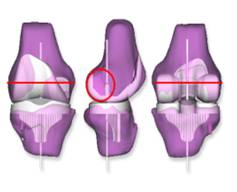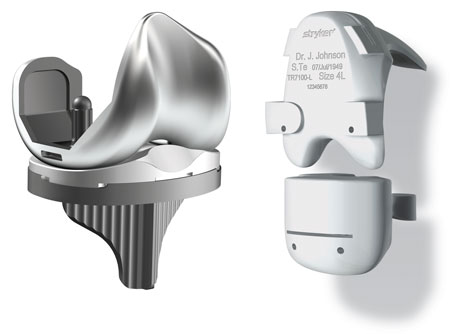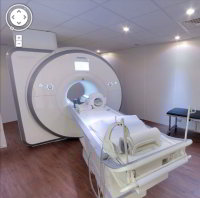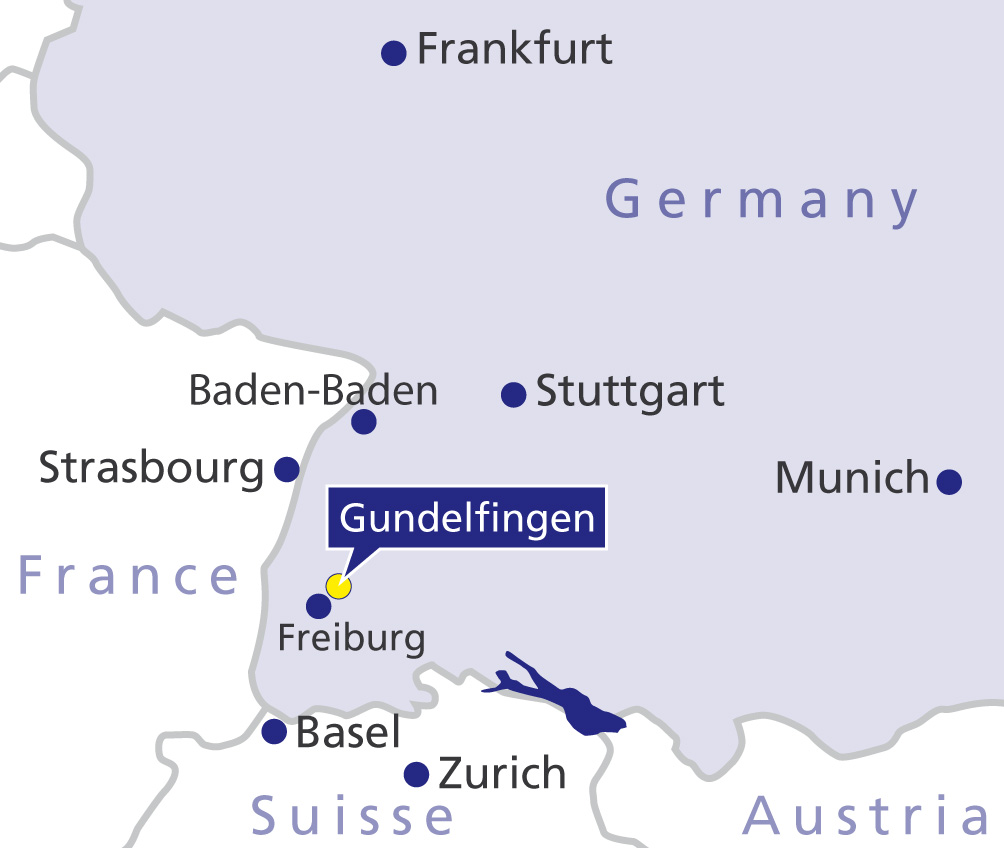Total Knee Replacement - restoring pain free mobility for patients with severe osteoarthritis
Key Facts: Total Knee Replacement (Total Knee Prosthesis)
- Indication: Osteoarthritis of the knee
- Strategy: total knee replacement/knee prosthesis/artificial knee
- Inpatient treatment: 5-7 days
- Outpatient rehabilitation treatment: 4 weeks
- Timewith braces (orthosis): 6 weeks
- Earliest flight home: 10 days after surgery
- Recommended flight home: 14 days after surgery
- Time before showering: 14 days after surgery
- Recommended time off work: up to 6 weeks (depending on profession)
- Removal of sutures: 14 days
- Time before driving a car: 6 weeks
 Knee specialist approach to total knee replacement. The Orthopedic Clinic Gelenk-Klinik has been certified as one of the main centres of endoprosthetic surgery in Germany. ©Viewmedica
Knee specialist approach to total knee replacement. The Orthopedic Clinic Gelenk-Klinik has been certified as one of the main centres of endoprosthetic surgery in Germany. ©Viewmedica
Total knee replacement (endoprosthesis)
If a partial knee replacement is no longer possible (the damage to the joint surface is too great), the knee joint surface is replaced completely with an "artificial knee joint". This means that the worn ends of the bones are replaced with metal and plastic parts.
With a total knee replacement, the choice of method used to connect the upper and lower leg components, is most important. There are two prosthesis options for this, "fixed bearing" and "mobile bearing". The mobile bearing prosthesis uses a moving "meniscus" disc, more closely resembling the natural structure of the knee.
Total Knee Replacement Surgery
 The size, position and orientation of the knee joint are different for each person. Individual knee prostheses can be adapted to the individual knee. This increases the stability and comfort of this innovative operation. © Stryker
The size, position and orientation of the knee joint are different for each person. Individual knee prostheses can be adapted to the individual knee. This increases the stability and comfort of this innovative operation. © Stryker
Total knee replacement surgery removes the damaged and painful areas of the femur (the thigh bone), and the tibia (the lower leg bone). These areas are replaced with specially designed metal and plastic parts.
 Comparative clinical studies have shown that the innovative technique of implanting the prosthetic knee individual is particularly beneficial in patients having high physical activity. © Stryker
Comparative clinical studies have shown that the innovative technique of implanting the prosthetic knee individual is particularly beneficial in patients having high physical activity. © Stryker
First the damaged bone and cartilage are cut away from the femur. The end of the femur is reshaped to allow a metal femoral component to fit in place. Next, the metal component is attached to the end of the femur with bone cement (acting as glue).
The damaged bone and cartilage are then cut away from the tibia and the end is reshaped to receive the metal tibial component. The metal component is secured to the end of the tibia with bone cement, and a polyethylene insert is attached to the upper surface. This insert will support the body's weight and allow the femur to glide across the tibia.
The new joint is formed by putting together the tibia (with its new polyethylene surface) and the femur with its new metal component.
To make sure that the patella (kneecap) will glide smoothly over the new artificial knee, its rear surface is prepared and a polyethylene plastic component is cemented into place.
Finally, the new parts of the new joint are tested by flexing and extending the knee.
A knee prosthesis is necessary when the articular cartilage becomes so severely damaged or worn away that the levels of pain and discomfort in the knee are high and the knee joint ceases to function properly i.e., where there is a reduction in the joint range of motion in the joint, or in cases where the knee joint has become malpositioned.
Total Knee Replacement using cement-free prosthesis
We advise a total knee replacement, only when both chambers of the knee are damaged to such an extent that partial prosthesis is not a viable option. However, even if a total knee replacement is necessary, there are two treatment options available. One option involves “non-cemented” fixation of the joint.
Cement-free fixation provides a very stable and long-lasting knee prosthesis even for the most active and athletic patients. The knee joint is less likely to loosen over time but requires a longer rehabilitation period (6 weeks).



